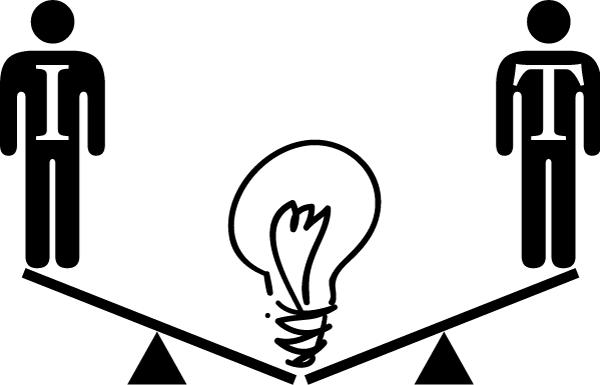
The different skills of I and T shaped people come into their own in the different stages of the innovation process. Most of the time, businesses operate mainly with I-shaped characteristics.
The added abilities of T-shaped characteristics – ds – really shine in the stages that benefit the most greatly from a cross-discipline/inter-silo perspective and collaboration. These are the stages where divergent thoughts are most likely to occur.
Problem-solving Step | Approach | Type |
|---|---|---|
| Problem/opportunity realisation | “We have a problem/opportunity.” | I-shaped, T-shaped, and others. |
| Requirements gathering | “What exactly is the problem/opportunity? What outcomes do we want?” | I & T: I-shaped to provide the specialist input and deep insights; T-shaped to connect the shareholders and ask out-of-the-box questions and big picture patterns. |
| Ideation | “What if? Why not? Perhaps?” | |
| Evaluation and planning | “Which idea should we pursue?” | I: Primarily I-shaped skills – decision making, SWOT analysis, project planning, expert execution… |
| Execution and delivery | “Let’s do it!” | |
| Review and improvement | “Did it work? How do we do better? What new problems/ opportunities have arisen?” | I & T: I-shaped to provide the deep insights; T-shaped to connect the shareholders and provide cross-silo insights. |